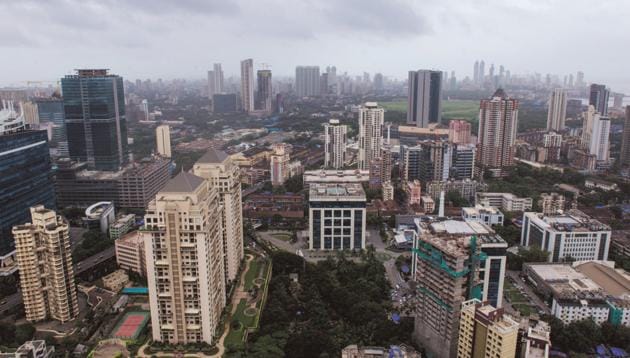Activists see red over green scrutiny waiver for real estate projects
Policy analysts and green activists have slammed a government notification that exempts real estate projects with a built-up area of up to 50,000 square metres from the environment impact assessment (EIA) process and from having to obtain a prior environmental clearance,saying the move was irresponsible and regressive.
Policy analysts and green activists have slammed a government notification that exempts real estate projects with a built-up area of up to 50,000 square metres from the environment impact assessment (EIA) process and from having to obtain a prior environmental clearance,saying the move was irresponsible and regressive.

The move was notified by the environment ministry on November 15, a day after it delegated the responsibility of monitoring whether real estate projects are meeting environmental standards to local bodies such as municipalities and district panchayats. Local bodies do not have powers to appraise or reject any of these projects.
All real estate projects above 20,000 sq metres have had to comply with the EIA and required prior environmental clearance from the State Environment Impact Assessment Authority.
What the latest move means is that projects the size of a large apartment complex or a five-star hotel can now go ahead without environmental scrutiny of the project site, of how it will affect traffic or air pollution, and how it will impact groundwater or surface water resources in an area.
The notifications came in the backdrop of massive public protests earlier this year against a proposal to fell more than 16,000 trees for the seven colonies to be constructed in south Delhi. The proposal was later dropped.
“The real-estate sector has been continuously asking for reducing environmental scrutiny on them since 2005 when the EIA notification was amended. They have tried this with successive governments,” said Kanchi Kohli, legal researcher at the Centre for Policy Research. “It’s irresponsible of the environment ministry to exempt projects when they should be applying the precautionary principle and increase their environmental scrutiny. The local bodies have been made responsible for monitoring of compliance with some environmental conditions but they cannot reject a project before it is constructed. The contribution of this sector to air and water pollution is now proven.”
Predictably, the new notifications were praised by the Confederation of Real Estate Developers’ Associations of India, or CREDAI.
“This is a positive step toward enhancing ‘Ease of Doing Business,’ leading to better implementation of environmental laws. The resultant reduction in time consumed in procuring approvals as well as reduction of costs will also give a boost to the entire housing sector, especially the affordable housing segment, expediting our Prime Minister’s dream of ‘Housing for All’ by 2022,” said Jaxay Shah, president of CREDAI.
Another concern with exempting real estate projects up to 50,000 square meters is that several buildings under one large project can be exempted from all environmental scrutiny if they decide to break the project into smaller units.
In December 2016, the environment ministry brought out a draft amendment notification which excluded constructions covering 20,000 to 150,000 square metres of built-up area from prior environmental clearance. The notification was subsequently challenged in the National Green Tribunal (NGT), which stayed the amendment. The Tribunal, in its judgement, stressed the principle of non-regression in environmental law, which mandates that existing laws cannot be modified to bring in a regressive system.
“The construction and real-estate sector is one of the largest sources of carbon dioxide (CO2) and greenhouse gas emissions in India. The construction sector emits about 22% of India’s total annual CO2 emissions, according to a case study for construction in India by Development Alternatives. Construction industry consumes enormous energy, accounting for 40% of global energy consumption,” said a statement issued by Legal Initiative for Forest and Environment, run by environmental lawyers Ritwick Dutta and Rahul Chowdhury.
Jigme Takpa, joint secretary in the environment ministry, said the current notification is different from the one issued in 2016 which NGT had stayed. “This notification gives powers to local governments and makes environmental monitoring of construction projects decentralized,” he said.
The November 14 notification recommends that local bodies ensure compliance with the Energy Conservation Building Code. A minimum of one tree should be planted for every 80 square meters of land, says the notification which also recommends that rainwater harvesting and water efficiency should be part of real estate projects.
Real estate companies have been squeezed by lenders impatient to recover their dues and customers angry at project delays, forcing many developers to shrink their businesses or exit. Some have avoided new launches for years, focusing instead on completing ongoing projects, selling land and finding partners for development amid a crippling cash crunch and the burden of heavy debt besides a tough, new real estate law.
“Currently even city master plans don’t have any environmental oversight or environmental assessment. They do ride roughshod (over green norms). For example, the Ghata lake bed in Gurgaon is zoned as residential sector 58. Now if even EIA for individual project is removed, there will be real risk to environment,” said Gurgaon-based Chetan Agarwal, an environment analyst. “There is immense pressure on the Aravallis from real estate projects,” he added.






